Seasons – February 2020
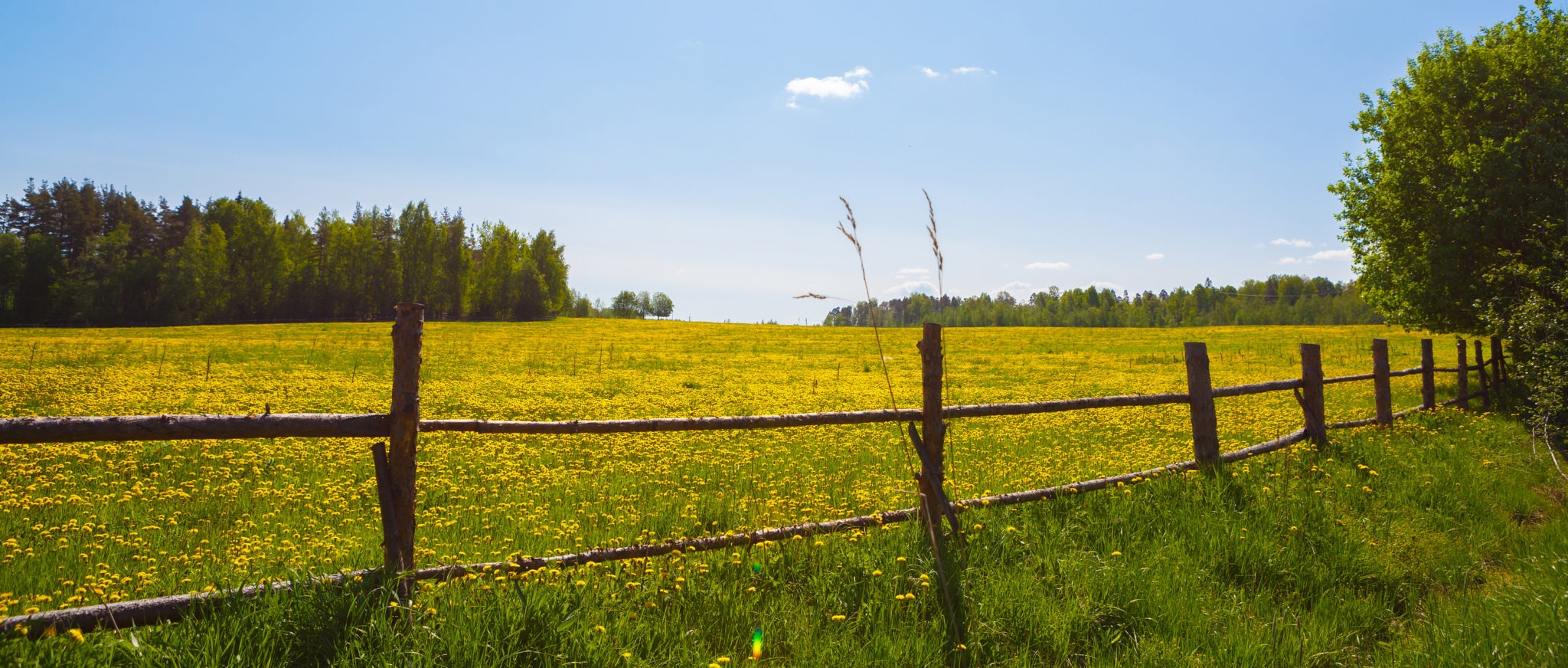
From the Plateau Land & Wildlife Management Team
Many have heard the saying, “Good fences make good neighbors”, but have you ever considered how proper fencing can contribute to a good wildlife habitat? In this issue of Seasons, you’ll find articles on fencing laws in Texas, fencing strategies for managing deer populations, suggested wildlife management activities for the month of February, a featured listing from our sister real estate company, and more.
Because an investment in your property, and the fencing that surrounds it, can not only benefit your peace of mind but the critters that live on it.
Until next season and Seasons,
The Plateau Team
Table of Contents
Importance of Proper Deer Management on High Fenced Properties in the Hill Country
Wildlife Management Activity Reminder: Nest Boxes
Service Spotlight: Seminars
Common Fencing Mistakes in Texas
Plateau Land Group Featured Listing
News for Texas Landowners
Importance of Proper Deer Management on High Fenced Properties in the Hill Country
By Kyle Lassiter, Staff Biologist I
Some people see high fencing a property as a cure-all for managing deer populations to their liking but don’t always realize the responsibility that comes with it. Properly managed high-fenced properties can often produce impressive trophy bucks and overall healthy and productive populations. However, if not managed properly it can create just as many problems. If you choose to high fence, the herd that used to have free roam over a wide area has become a captive herd and it is now your responsibility to ensure they have quality habitat, food, and resources provided to them every day.
Most of the Hill Country already has a white-tailed deer overpopulation issue. Confine them to an enclosed area, allow them to overpopulate and those effects can become exacerbated quickly. Competition for resources among deer in overpopulated areas increase, putting extra pressure on some and often resulting in poorer antler and body conditions. Eventually, the overall habitat quality and diversity will decrease and plant communities will suffer. These plant communities are a landowner’s most important asset. Diverse, quality plant communities not only benefit deer populations but also songbirds, small mammals, quail, turkey, and all other wildlife that may be utilizing the property. With healthy rangelands you will have more diverse plant life and wildlife populations, superior hydrologic functioning (less runoff and erosion, more infiltration, higher spring flows), and a more aesthetically pleasing property.
Population Management & Recommended Densities
Proper population management is essential not only to a healthy habitat but also to improving herd quality, i.e., fawn crop, average body weight, and antler size. If left improperly controlled, populations will eventually increase until the habitat becomes limited, resulting in decreases in the overall quality of the herd. It is important to be aware of the current densities occurring on your property for proper population management. The recommended white-tailed deer herd density for a well-managed, seasonally hunted Hill Country property in good condition should be approximately 10-15 acres-per-deer. The recommended density for mixed native-exotic herds on the same property should be 7-10 acres-per-deer. Maintaining optimal mixed-herd sizes, much like appropriate livestock stocking rates, will help sustain the health of a property ensuring that it will continue to provide high-quality forage for the benefit of other wildlife species.
Sex ratio can also play an important role in the proper management of deer. In an ideal world, you would want a sex ratio somewhere around 1 to 2 does-per-buck for a sustainable herd. If there is an abundance of does but very few breeding bucks, it can result in negative impacts for the herd. When the does-per-buck ratio is much higher, there is a high possibility that a receptive doe will not be bred when she first experiences estrus (becomes sexually receptive) in the fall. If a doe isn’t initially bred, she will come out of estrus temporarily but will experience estrus multiple times during the rut until she is bred. If the doe is not bred until the end of the rut, the resulting fawns will be born much later than if they had been conceived near the beginning of the doe’s estrus cycle. Greater stress is then put on the doe and the fawns will typically be smaller than others born in the same year class. More typical than not, a late-season fawn will be undersized.
If doe-per-buck ratios are closer to desired ranges it can help improve the overall body conditions of the herd as well as encourage breeding competition between bucks so that the strongest and largest bucks are the ones that end up breeding with the does. Keep in mind that one buck can impregnate multiple does. If there are substantially more does than bucks, breeding competition will be low and a poor quality buck can potentially breed with multiple does lowering the overall herd quality. Also, the overall population growth potential will be extremely high.
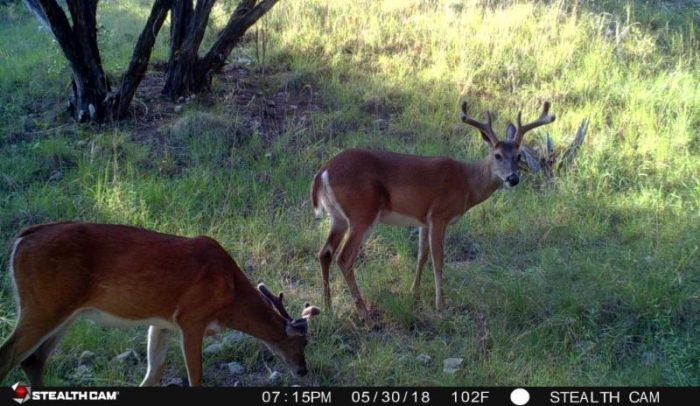 These densities and ratios can often be difficult to achieve, especially in mixed-herd populations, as you are adding more breeding populations that need to be actively managed and controlled in addition to white-tailed deer populations. Not being able to harvest enough animals required to meet desired densities every year is an understandable and often expected occurrence, and should not be discouraging. Management and control efforts of any kind to reduce the population size is an ongoing process toward long-term goals of healthy ungulate herds and habitat. Should any difficulty be encountered in meeting these goals, the majority of hunting efforts should be strongly concentrated toward does in order to help reduce sex ratios and limit an undesirable high productivity rate.
These densities and ratios can often be difficult to achieve, especially in mixed-herd populations, as you are adding more breeding populations that need to be actively managed and controlled in addition to white-tailed deer populations. Not being able to harvest enough animals required to meet desired densities every year is an understandable and often expected occurrence, and should not be discouraging. Management and control efforts of any kind to reduce the population size is an ongoing process toward long-term goals of healthy ungulate herds and habitat. Should any difficulty be encountered in meeting these goals, the majority of hunting efforts should be strongly concentrated toward does in order to help reduce sex ratios and limit an undesirable high productivity rate.
With all this in mind, it is very important to have one or more census activities to get proper estimates and keep track of trends and activity within the populations. Camera and/or spotlight surveys can be conducted every year in order to identify and analyze population trends as well as determine the efficacy of applied management practices. Harvest records, stand counts, and incidental observations can be kept and diligently maintained in order to detect changes, measure progress, evaluate management success, and predict future needs. Daytime incidental observations are an excellent way to supplement and improve the accuracy of other survey estimations. Monitoring browse pressure on key food plants can indicate if the habitat can support the population. The results from these activities are essential to maintaining and managing a healthy population.
Will supplemental feeding help if I have too many deer?
Supplemental feeding is often seen as a quick fix to overused land but can instead intensify the degradation of the surrounding habitat, especially around feeding locations on a high-fenced property. If the property becomes overpopulated and overused, supplemental feeding alone will not work. Deer will often visit these feeding sites more often than usual and feed on the surrounding vegetation, resulting in the local degradation of habitat. This local degradation can increase less desirable or invasive plants as the deer reduce the competitive ability of the native plants. To try and minimize the negative aspects of supplemental feeding, you can move the location of your feeding stations periodically which will allow the surrounding habitat to recover from excessive browsing.
Can having exotics on a high-fenced property affect my wildlife management valuation?
Some appraisal districts do have issues with high exotic populations. Since they are not native, exotics are considered livestock, not wildlife, by the state of Texas. High densities of exotics on a property could create questions about your primary use for wildlife management, potentially resulting in the loss of a wildlife management valuation. For most well-managed properties this shouldn’t be a problem but the primary use issue can come into play when there are far more exotics on the property than natives. If this is the case for you, it may be in your best interest to consider a switch from wildlife management to ag for an exotic livestock valuation. If you choose this route, it would essentially be the same as traditional ag for cattle or goats but with exotics as your “livestock” and a few key points would need to be considered/met:
- Exotic animal operations raise the animals for the production of meat or other commercially viable products such as leather, feathers, or byproducts used in cosmetics or for medicinal purposes. Exotic livestock will need to be actively bred, sold, and/or traded
- Hunting is not considered a commercial product of exotics; it is considered a recreational activity. If hunting is the principle use of the exotic animals then the land will not qualify for agricultural use valuation
- Typically a minimum of 3 animal units are required, but can vary by county and animal
- Property should have adequate fencing suitable for livestock containment
- Water supply suitable for the number of stock
- This type of operation, depending on the species of animal, usually requires a “deer-proof” high fence.
If you’re interested in scheduling a camera or spotlight survey for your property, contact us at plateau@plateauwil1dev.wpenginepowered.com or (512) 894-3479
Back to TopBack to TopWildlife Management Activity Reminder: Nest Boxes
By Kameron Bain, Landowner Account Manager
- Clean out your nest boxes: clean out any debris or leftover nesting material from the previous year
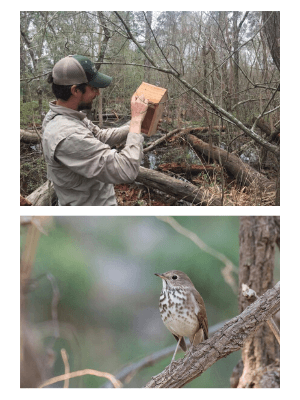
- Fix damage: fix any damage made by weather, old age or other animals
- Replace or purchase additional nest boxes: if a nest box is damaged beyond repair, replace it. Plateau offers an array of affordably-priced, Texas-made nest boxes
- Ensure boxes have a clear entryway: always make sure branches aren’t obstructing entry for birds to get in or out of the nest box, and if there are, be sure to trim those interfering branches to allow access
- Map out nest box locations: mapping out your nest box locations can help you manage your wildlife management activities and reporting. Hiring Plateau to install your nest boxes simplifies your reporting by capturing each nest box location with a GPS waypoint
- Document your activity: documentation is something you will hear us mention a lot. To prove your activities to the appraisal district, take pictures when cleaning out your nest boxes, make notes of the dates you checked them, and document when the boxes are replaced
- Ask Plateau: It’s easy to get behind – we’re here to help answer questions or do the work for you! Contact us at (512) 894-3479 or plateau@plateauwil1dev.wpenginepowered.com to schedule a nest box cleaning or installation
Service Spotlight: Seminars
 It’s Property Tax Season!
It’s Property Tax Season!
Landowners in Ag or Timber – Come learn how a wildlife management plan keeps your ag or timber valuation in place while improving the beauty of your land and ease of operation.
Plateau will present 25 seminars in various cities across Texas in February and March, explaining the ins and outs of wildlife management valuation, provide examples of qualifying activities and be your resource for any questions or concerns you may have about managing for native Texas wildlife.
You can find the schedule of locations on our event directory.
The deadline to file for an ag or timber valuation is April 30, 2020. Contact us today to get started on your Plateau plan!
Back to TopBack to TopCommon Fencing Mistakes in Texas
By Joanne Hatton, Braun & Gresham Attorney and Counselor
“It makes a difference doesn’t it, whether we fully fence ourselves in or whether we are fenced out by the barriers of others.” – E.M. Forster
That might be true for people, but, in Texas, we know it’s definitely true for livestock. Depending on which county in Texas you reside, you could be required to fence-in your livestock or, if you want to keep your neighbor’s cows off your land, you might need to fence them out. Most counties in Texas are open range, but that doesn’t necessarily mean you don’t need to build a fence. In open range counties, landowners must fence-out the animals they don’t want on their land, but some landowners must fence-in their animals regardless of whether or not their county is open range. Disputes over fences are common in Texas. Here are a few common mistakes made when determining whether you need a fence and when building, maintaining or removing fencing in Texas:
- Not checking with the county clerk or a rural real estate attorney to see if there are any stock laws in your county: Stock laws may make a county or an area of a county closed range. Those stock laws can apply to all livestock or only to certain animals. They can apply to the entire county or only a portion of the county.
- Assuming that you don’t need to fence in your livestock because you live in an open range county: Even if you live in an open range county, you may still need to fence-in your livestock. For example, the Texas Agricultural Code prohibits livestock owners from knowingly permitting their livestock to roam unattended on the right-of-way of a federal or state highway. Each day an animal is on the highway is a separate offense.
- Building a fence that is not sufficient under the Agricultural Code or that doesn’t meet additional requirements that may exist in your county when fencing-out in an open range county: Whether or not you have a sufficient fence is the key to determining if your neighbor might be liable for damage to your property caused by his livestock. Generally, for your fence to be sufficient, your fence must meet the requirements under the Texas Agricultural Code. The Code requires that a fence used to fence-out livestock must be at least four feet high and comply with the following requirements:
- a barbed-wire fence must consist of three wires on posts no more than 30 feet apart, with one or more stays between every two posts (though some counties may require a board in addition to the three wires);
- a picket fence must consist of pickets that are not more than six inches apart;
- a board fence must consist of three boards not less than five inches wide and one inch thick; and
- a rail fence must consist of four rails.
- Assuming the sufficient fence requirements under the Texas Agricultural Code apply to landowners who must fence-in their livestock: The descriptions of what constitutes a sufficient fence under the Texas Agricultural Code apply to fences put up by landowners to fence-out livestock in areas that are not open range. Stock laws in counties that are not open range have various requirements for containing livestock, and different standards for when an owner of livestock may be in violation of a stock law or liable for damage caused by his livestock outside his property.
- Building a fence without checking the property line: Building a fence on your neighbor’s property is an encroachment. If your fence encroaches on your neighbor’s property, you may be required to remove the fence and your neighbor may have rights to damages. Always be sure to verify the location of a property line before erecting a fence.
- Attaching your fence to your neighbor’s fence without permission: If your neighbor’s fence is wholly on their property and you attach your fence to theirs, they can require you to disconnect and withdraw the attached fence by giving you a six-month notice in writing. It is best to verify the property line or to get permission from your neighbor in writing before attaching a fence to an existing fence that is not on your property.
- Not addressing a misplaced fence: If a fence is misplaced and you continue to allow your neighbor to use part of your property, that neighbor may eventually have a claim for adverse possession. Granting your neighbor permission to use the piece of your property in writing and getting an acknowledgment from your neighbor can be effective to prevent later adverse possession.
- Tearing down a fence you think is your own, or which is attached to your neighbor’s fence, without giving notice in writing: If a fence straddles a boundary line, the fence may be the property of both neighbors. Under the Texas Agricultural Code, a person may not remove a fence in which the person is a joint owner or a fence that is attached to a fence controlled by another person, without giving a 6-month notice of the intent to remove the fence in writing.
Many disputes with neighbors can be avoided or mitigated by understanding the fence laws that apply to your property and by approaching your neighbors before you take action. Talk to your neighbors. After all, as Texas Bix Bender says, “Most folks are like a barb-wire fence. They have their good points.”
If you have questions or want to learn more about fencing laws in Texas, call Braun & Gresham’s real estate attorney, Joanne Hatton, at (512) 894-5426.
Back to TopBack to TopPlateau Land Group Featured Listing
Victori Farm
54 Acres, $925,000
La Grange, Fayette County, TX
Victori is a productive and picturesque farm south of La Grange. The rolling property features a 4.5-acre lake, 12 acres of certified organic soil, a 350 ft. irrigation pivot, six smaller ponds, and is entirely high-fenced. Finished with a barndominium and large shop, Victori Farm is for the homesteader or commuter who wants a little room to breathe.
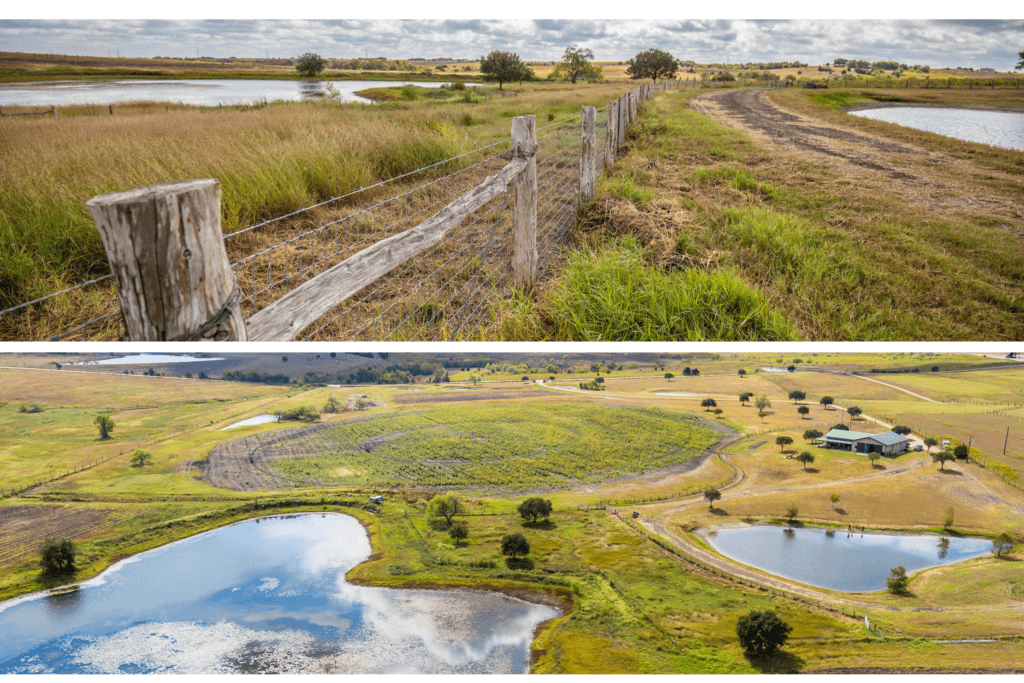
View all of Plateau Land Group’s listings.
Click here to receive Plateau Land Group’s newest listings by email.
News for Texas Landowners
Val Verde County White-tailed Deer Tests Positive for Chronic Wasting Disease
News release by the Texas Parks & Wildlife Department
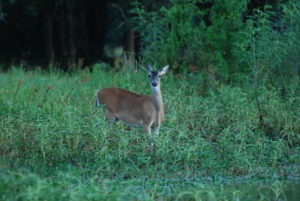 State taking steps and following plan to deploy containment strategy
State taking steps and following plan to deploy containment strategy
AUSTIN – Chronic wasting disease (CWD) has been detected in a free-ranging, 5 ½ year-old white-tailed doe between Del Rio and Amistad Reservoir, making it the first confirmed case of the disease in Val Verde County.
The Texas Parks and Wildlife Department (TPWD) and Texas Animal Health Commission (TAHC) are implementing a containment strategy designed to limit the spread of CWD from the affected area and better understand the distribution and prevalence of the disease.
“Because eradication is thought to be impossible once CWD becomes established in a population, it is imperative that we work with other agencies, landowners and hunters to contain this disease within a limited geographic area and prevent it from spreading further among Texas deer populations,” said Dr. Bob Dittmar, TPWD’s Wildlife Veterinarian…
Texas Comptroller’s Office Partners with the University of Houston – Clear Lake to Perform Western Chicken Turtle Surveys
News release by the Texas Comptroller
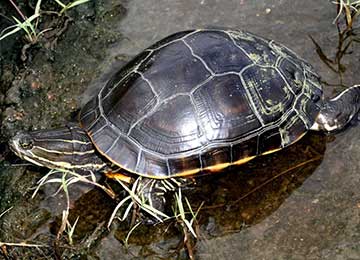 AUSTIN — The Texas Comptroller’s Natural Resources program has contracted with the University of Houston – Clear Lake (UHCL) to conduct range-wide surveys in East Texas for the western chicken turtle. The partnership will inform an upcoming Endangered Species Act (ESA) listing decision for the species and develop information that local resource managers can use to sustain economic development while conserving natural resources.
AUSTIN — The Texas Comptroller’s Natural Resources program has contracted with the University of Houston – Clear Lake (UHCL) to conduct range-wide surveys in East Texas for the western chicken turtle. The partnership will inform an upcoming Endangered Species Act (ESA) listing decision for the species and develop information that local resource managers can use to sustain economic development while conserving natural resources.
The historic range of the western chicken turtle includes wetlands across East Texas, a region that supports numerous industries important to the Texas economy. Biologists believe the species may be affected by habitat loss and vehicular traffic. Despite the listing decision planned for 2024, the current status of the species and its habitat are not well understood.
“This project will address important data gaps and continue the efforts of the Natural Resources program to identify science-based solutions for conservation challenges,” Texas Comptroller Glenn Hegar said…
Free Milkweeds for Restoration Projects
Program by Monarch Watch
 Thanks to funding sources, Monarch Watch and their partner nurseries were able to distribute over 91,000 free milkweeds for habitat restoration in 2019. Since the program began in the Fall of 2015, they have distributed 528,000 milkweeds!
Thanks to funding sources, Monarch Watch and their partner nurseries were able to distribute over 91,000 free milkweeds for habitat restoration in 2019. Since the program began in the Fall of 2015, they have distributed 528,000 milkweeds!
Monarch Watch has received funding to distribute more milkweeds in Spring 2020! The program includes habitat restoration projects located in the Monarch Milkweed Corridor. This covers most of the eastern half of the United States….
Guidelines, information on available species, and the application to apply can be found on Monarch Watch’s Bring Back the Monarchs page.
Back to TopBack to Top



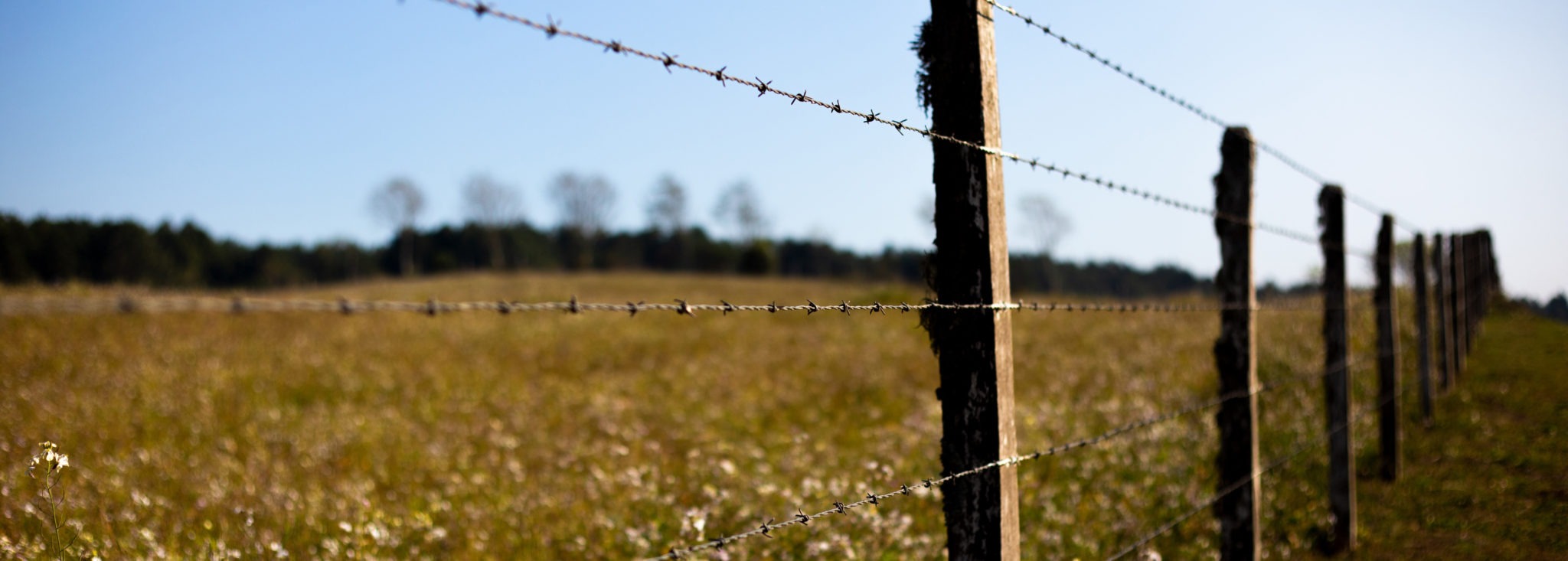




Sorry, the comment form is closed at this time.